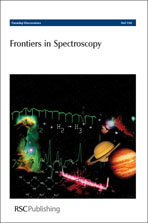Although hydrophobicity is a commonly used concept, its microscopic nature, particularly in the context of hydration, is not well understood. Here, we present a study of hydrophobic and hydrophilic solutes using terahertz (THz) spectroscopy and molecular dynamics (MD) simulations. We measured the concentration dependent THz absorption (2.1–2.7 THz) of several amino acids and peptides in aqueous solution. Experimentally, we find a correlation between the change in THz absorption of solvating water and specific properties of the solute such as polarity and hydrophobicity. In addition, we studied the effect of hydrophobic and hydrophilic model particles on water dynamics by MD simulations. We are able to link the vibrational density of states (VDOS) in hydration water around the model particles to the experimentally observed change in THz absorption of solvated amino acids. We find a stronger increase in THz absorption and in the oxygen VDOS of solvating water molecules for the hydrophilic versus hydrophobic solutes. The simulations provide us with a microscopic insight into the change of the hydration dynamics as induced by hydrophobic and hydrophilic solutes. For hydrophobic and hydrophilic model particles a retardation of dynamical processes on the picosecond timescale is found, which is more pronounced for hydrophilic compared to hydrophobic solutes.
You have access to this article
 Please wait while we load your content...
Something went wrong. Try again?
Please wait while we load your content...
Something went wrong. Try again?

 Please wait while we load your content...
Please wait while we load your content...